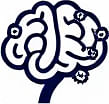The Impact of Anchoring Bias on Decision-Making
 by Shanie Goodwin
by Shanie Goodwin
Anchoring Bias influences how we make choices by fixating on initial information. This bias appears in negotiations, pricing, and daily judgments, often leading to skewed outcomes. Learn to recognize and counteract it for better decisions.

Anchoring Bias is a common cognitive bias that affects how people process information and make decisions. It occurs when an initial piece of information sets a reference point, influencing subsequent judgments. For instance, in a negotiation, the first offer can shape the entire discussion.
What is Anchoring Bias?
This bias happens when individuals give disproportionate weight to the first data they receive. Imagine shopping for a car; if a salesperson mentions a high price first, you might consider lower offers more favorably than you should. The initial figure acts as an anchor, pulling evaluations toward it.
In psychology, researchers have shown how this bias operates through experiments. Participants might be asked to estimate a number, like the population of a city, after seeing a random value. Those exposed to a higher number tend to overestimate, while others underestimate based on a lower anchor.
Examples in Everyday Life
Anchoring Bias shows up in various situations. In business, pricing strategies often use it. A company might list a product at a premium price before offering a discount, making the reduced price seem like a great deal. Consumers then perceive the value based on that original anchor.
In personal finance, people might fixate on the price they paid for an investment. If stocks were bought at a high point, sellers could hold onto them too long, hoping to recover losses, rather than assessing current market conditions.
Education provides another example. Teachers might grade based on an initial assessment, letting early performance influence their view of a student's potential, even if later work improves.
Effects on Business Strategies
In professional settings, Anchoring Bias can alter outcomes significantly. During salary discussions, the first number mentioned—whether by employer or employee—sets the tone. If an employer starts with a low figure, negotiations might settle below what the employee deserves.
Marketers leverage this bias effectively. By presenting a high-end option first, they make mid-range products appear more attractive. This technique helps in product positioning and can boost sales.
However, awareness of the bias is crucial. Leaders who recognize it can adjust their approaches, encouraging teams to seek multiple perspectives before finalizing plans.
How Anchoring Bias Influences Cognitive Development
From a cognitive perspective, this bias relates to how the brain processes information. Early exposure to data creates a mental framework that is hard to shake. Over time, repeated exposure can reinforce these anchors, affecting long-term thinking patterns.
For lifelong learners, being mindful of this can improve critical thinking. By challenging initial assumptions, individuals can develop more balanced views and make informed choices.
Practical Ways to Counteract Anchoring Bias
There are effective methods to reduce the impact of this bias. First, gather diverse information before deciding. This involves seeking out alternative data points to broaden your reference.
Second, use structured decision-making processes. For example, in meetings, encourage participants to list pros and cons independently before group discussion. This minimizes the influence of the first opinion shared.
In negotiations, prepare by researching market standards. Knowing average values provides a counterbalance to any anchor presented.
Additionally, practice reflection. After decisions, review what influenced you and consider if an anchor played a role. Over time, this habit can enhance awareness and lead to better outcomes.
Real-World Applications
Consider a real estate scenario: A seller lists a home at an inflated price. Buyers, anchored by that figure, might offer more than the property's worth. Real estate agents who understand this can advise clients to ignore the initial price and focus on comparable sales.
In healthcare, doctors might anchor on a patient's first symptoms, potentially overlooking evolving conditions. Training in bias awareness can help professionals provide more accurate diagnoses.
The Role in Personal Growth
For curious individuals, recognizing Anchoring Bias is key to personal development. It encourages questioning assumptions and fosters a more objective mindset. Professionals in fields like psychology or business can benefit by integrating bias checks into their routines.
Ultimately, addressing this bias leads to clearer decision-making and greater success in various aspects of life.
Conclusion
Anchoring Bias is a subtle yet powerful force in human cognition. By learning about it and applying strategies to mitigate its effects, individuals can achieve more rational and effective decisions. Whether in business, education, or daily life, staying alert to this influence promotes better outcomes and ongoing growth.
